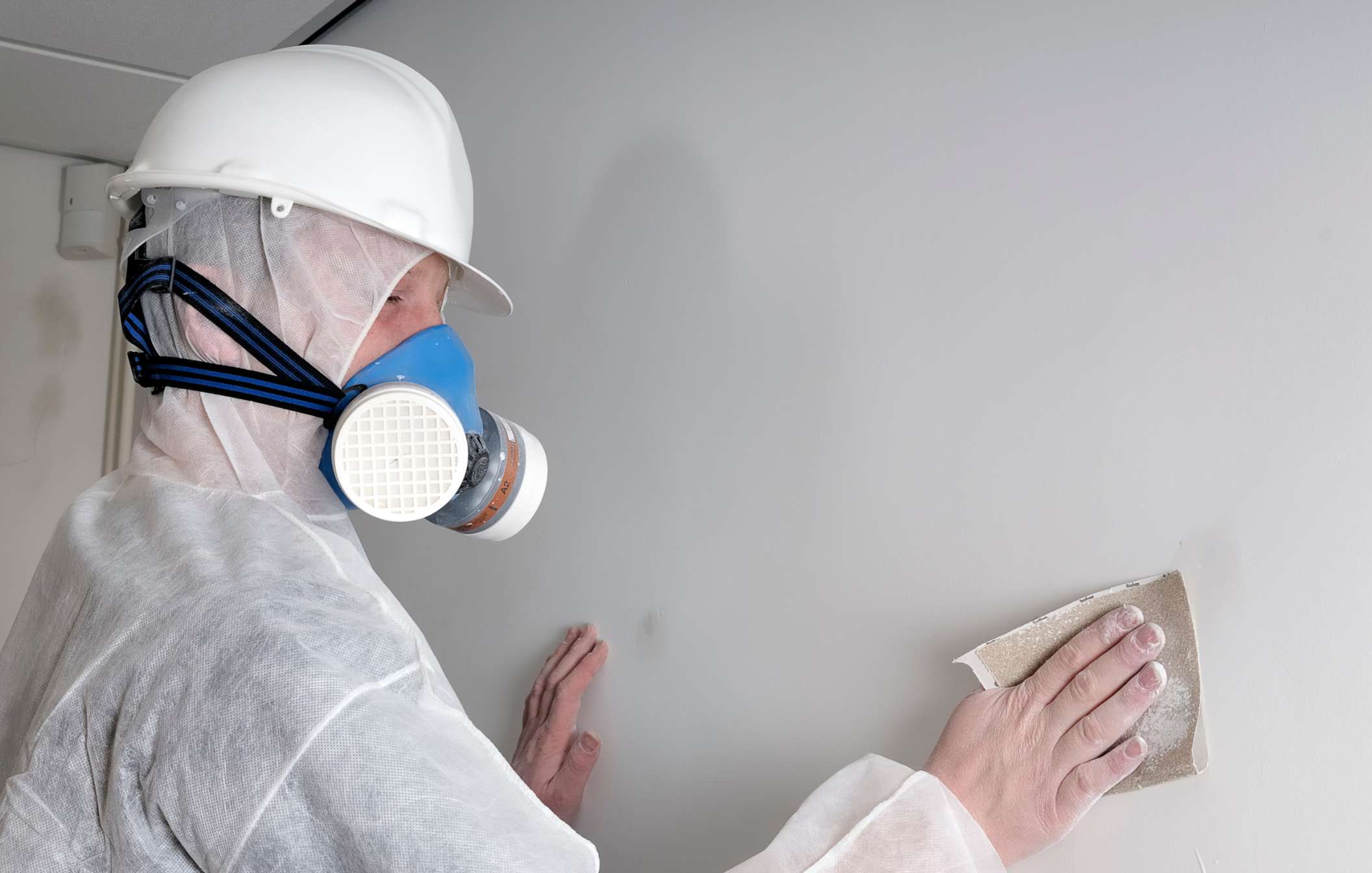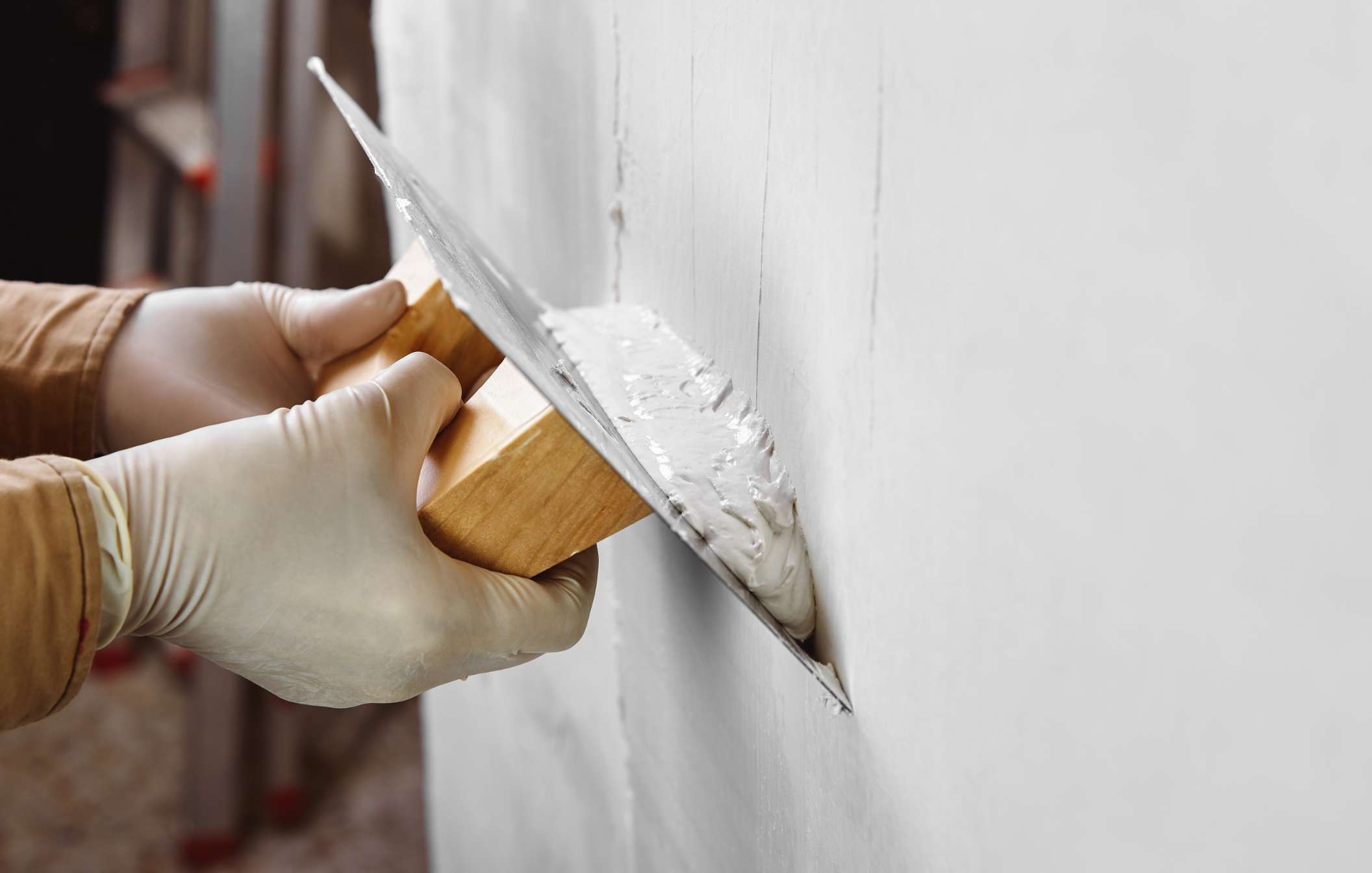Painting old plaster walls can be more challenging than painting drywall due to the natural instability of plaster. However, with careful preparation and the right products, you can give your plaster walls a fresh, long-lasting finish.
Here’s a step-by-step guide to achieving professional results.
Let’s get straight to the point.
Painting old plaster walls requires careful preparation for a long-lasting finish. Start by repairing cracks and holes with plaster, patching the compound, sanding, and cleaning the surface.
Use oil-based or shellac primers to block moisture and stains, and apply quality latex paint. Ensure the walls are primed and painted in multiple coats and any moisture issues are addressed.
For new plaster, apply a mist coat first. Proper sealing, sanding, and choosing the right primer are key to preventing peeling, flaking, or stains from bleeding through.
Preparing The Room
Before starting any painting project, getting your space ready is important.
- Move the furniture: Shift all the furniture to the centre of the room, leaving the walls clear.
- Cover the floor: Protect your floors by laying down drop cloths or plastic sheeting.
- Remove wall decor: Take down any pictures or wall hangings and remove nails using the claw end of a hammer.
- Take off outlet covers: Unscrew and set aside all outlet and light switch covers.
Repairing Damaged Plaster
Old plaster can have cracks, holes, and other imperfections. Address these issues before painting.
- Fill holes and cracks: Use plaster patching compound and a putty knife to fill large cracks or holes. After the initial layer dries, apply a second coat if necessary.
- Use mesh tape for larger repairs: For bigger cracks, place mesh tape over the filled area and apply a thin layer of patching compound.
- Sanding: Once dry, sand the patched areas with a fine-grit sanding block until smooth.
After sanding, clean the surface with a damp cloth or vacuum to remove all dust.
Caulking Small Cracks
For minor cracks, use latex painter’s caulk.
- Apply caulk: Run a thin bead of caulk along any small cracks using a caulking gun. This will help seal the surface and prevent moisture from penetrating the wall.
Sanding The Walls

Before priming, sand the walls to ensure the surface is smooth.
- Fine-grit sanding: Use a fine-grit sanding block to smooth out rough areas. This also dulls the old paint, helping the new primer adhere better.
Washing The Walls
It’s essential to clean the walls before applying primer.
- Soapy water wash: Wash the walls with water and mild detergent, ensuring you remove any dust, dirt, or grease. Let the walls dry completely before moving on to the next step.
Masking And Taping
Protect any trim or mouldings.
- Use painter’s tape: Painter’s tape can mask off crown moulding, baseboard and window frames to ensure clean, crisp lines while painting.
Applying Primer To Plaster Walls
Using the right primer is crucial for plaster walls, as they are more prone to moisture issues than drywall.
- Oil-based or shellac primers are best for sealing moisture and covering stains on old plaster walls.
- Cut in the edges: Start using a 2-inch angled brush to cut around the edges, corners, and unreachable cans.
- Use a roller for large areas: Once the edges are done, use a medium-nap roller to cover the larger areas of the wall.
Allow the primer to dry according to the manufacturer’s instructions before applying a second coat. Ensure the primer is fully dry before proceeding to paint.
Choosing The Right Paint
For plaster walls, using high-quality paint is essential for a lasting finish.
- Latex paint: Opt for top-quality paint, which provides a durable and smooth finish after priming.
- Tinted: Consider using a tinted primer if you use bright or bold colours like red or yellow. This helps the colour stand out and may reduce the number of paint coats needed.
Painting The Walls
Once the primer is fully dry, you can begin painting.
- Cut in the edges with paint: Paint the edges and corners of the room using the same 2-inch angled brush.
- Use a roller: After cutting in, use a medium-nap roller to paint the rest of the wall. Make sure to overlap slightly with the edges for an even finish.
Let the first coat dry per the manufacturer’s instructions, and then apply a second coat for a professional result.
Clean-Up
Once the painting is complete, it’s time to clean up.
- Clean brushes and rollers: Use paint thinner for oil-based primer and water for latex paint.
- Remove tape: Carefully remove the painter’s tape before the paint fully dries to avoid damaging the edges.
- Replace outlet covers and wall hangings: Once the paint is dry, reinstall any outlet covers and hang your artwork back on the walls.
Best Primer For Plaster Walls
Plaster walls are more susceptible to moisture and require a primer to block stains and seal the surface efficiently. Here’s a look at the most suitable options:

- Oil-based primers are ideal for old plaster walls because of their excellent moisture-blocking properties. They also help prevent any old stains from seeping through the new paint.
- Shellac-based primers: For particularly tough stains or areas prone to moisture, shellac primers are another excellent option. They work well in high-moisture areas such as bathrooms and kitchens.
- Water-based primers: Although oil-based primers are generally recommended for plaster, water-based options are available for low-odour and easy clean-up situations. These primers work well for blocking stains like crayons or grease.
Conclusion
Painting old plaster walls requires more preparation than painting drywall, but with the right steps, you can achieve a durable, long-lasting finish. Your plaster walls can look as good as new by patching, priming, and painting with care.
Using high-quality materials—especially primers and paints—will ensure the walls are protected from moisture and stains, giving your home a fresh look for years to come. Whether dealing with new plaster or old, properly preparing the walls is the key to success.
FAQs About Plaster Walls
What Type Of Primer Is Best For Old Plaster Walls?
Oil-based or shellac primers are ideal for old plaster walls. They effectively block moisture and stains, preventing issues like peeling or bleeding.
How Should I Repair Cracks And Holes In Plaster Walls Before Painting?
Fill cracks and holes with plaster patching compound. For larger cracks, apply mesh tape over the patched area and cover it with a thin layer of patching compound. Sand the surface smooth before priming and painting.
Why Do I Need A Mist Coat On New Plaster?
A mist coat, made from watered-down emulsion, helps seal new plaster, making it less absorbent and allowing the topcoat to adhere better. This prevents the paint from peeling or soaking unevenly into the wall.
How Can I Prevent Moisture From Damaging My Plaster Walls?
Use a vapour barrier primer in moisture-prone areas, such as kitchens or bathrooms, to seal the surface and block moisture from passing through. A mildew-resistant topcoat also helps protect against peeling and flaking.
What Can I Do If Paint Is Peeling Or Cracking On Plaster Walls?
Peeling or cracking paint is often caused by moisture or poor surface preparation. Scrape off the damaged paint, patch any cracks, sand the surface, and apply an oil-based or shellac primer before repainting. Make sure moisture issues are addressed before painting.

